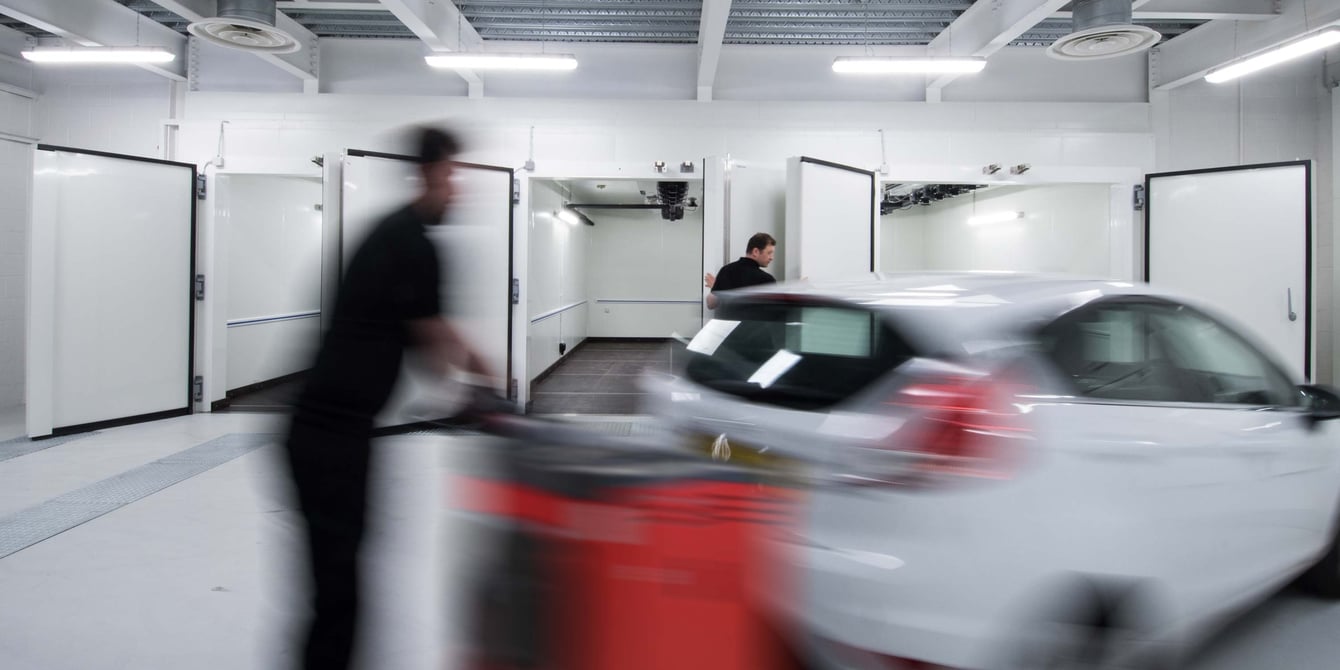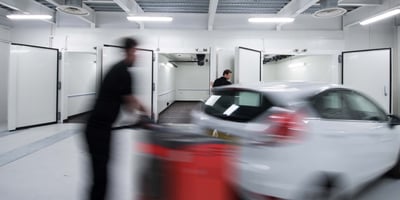The shift from ICE to EV production brings new potential HSE hazards to automotive testing. Find out how leading manufacturers collaborate with trusted partners to tackle challenges such as quickly evacuating cars at acute risk of catching fire.
The increasing electrification of the automotive industry has a big impact on vehicle testing. As a consequence, the risk of battery fires and thermal runaway—where a lithium-ion cell enters an uncontrollable, self-heating state—has become a highly prioritized HSE issue for car manufacturers looking to protect their consumers from the potential lethal consequences that thermal runaway can cause. And during the testing process this is especially important as EV batteries are monitored closely to detect potential overheating. as testing—by design—pushes EV vehicles to their limits. If there isn't any risk of fire, the entire vehicle needs to be taken out of the facility to a designated area where it can potentially burn at a safe distance from people and surrounding buildings.
“This challenge affects the entire industry. Manufacturers and third-party testing facilities are looking for ways to quickly and safely evacuate potentially hazardous vehicles with minimal human interaction,” Magnus Grafström, CTO of Stringo, explains.
The traditional Stringo vehicle mover is operated by a person standing on a ride-on platform, and with only the front wheels of the car loaded onto the machine. In most day-to-day vehicle-moving situations, this design does the job perfectly. But moving a car at risk of bursting into thermal flames requires a different approach.
To come up with a solution, Magnus and his R&D team work in close collaboration with leading automotive manufacturers. “The two main criteria from the manufacturers’ perspective are being able to load the entire car onto the vehicle mover and to operate the machine remotely,” says Magnus.
Moving vehicles in extreme conditions
Another crucial factor is making sure critical components of the Stringo, such as the battery, sensors, and hydraulic hoses, are protected, allowing the machine to maintain full functionality—even at extreme temperatures or while exposed to toxic fumes. “Worst case scenario, you have to move a car and it catches fire. If your vehicle mover stops mid-transport in that situation, it’s a disaster,” Magnus points out.
He stresses that the iterative development process is a continuous learning experience for the Stringo team and the automotive manufacturers they’re collaborating with. “If we had tried to solve this challenge on our own, we’d have to guess what the needs and requirements were, instead of getting the data straight from the source. Now, we have a constant feedback loop where we can ask questions and bring up aspects that the manufacturers might not have thought of, and vice versa.”
Setting a new industry standard
Magnus is confident that the results of this collaboration will become the new industry standard in the very near future:
“We’re seeing a huge interest from several manufacturers, and the third-party testers are also watching closely what these companies are doing. Once the frontrunners of the industry have implemented our solution, others will follow suit.”
As Stringo keeps developing new tools to support the changing needs of the automotive industry, the company’s role as a supplier also evolves:
“The products we develop and manufacture today do much more than get vehicles from A to B. They’re an integral part of the infrastructure for EV testing safety, preventing people from getting hurt and buildings that contain millions of dollars of equipment from being destroyed,” Magnus concludes.
Want to learn more about current automotive industry trends?
Don’t miss our article on remote and automated vehicle-moving.





